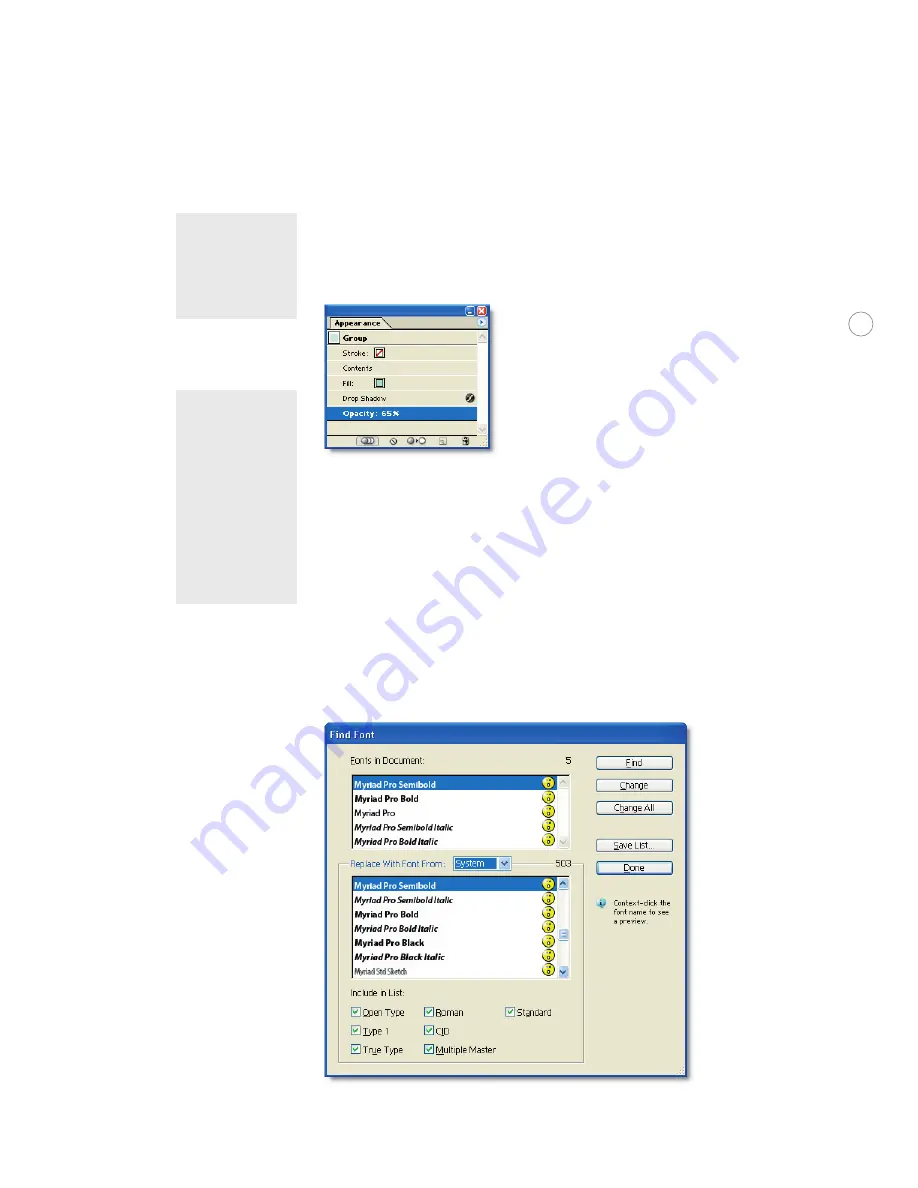
23
Appearance palette:
Once you have selected an object, group or layer using the Layers
palette, you can see the graphic styles and effects (including fills and strokes) applied to it
using the Appearance palette. The order in which the effects are listed from top to bottom is
the order in which they were applied.
Best Practice:
Have the Layers and
Appearance palettes
open while looking
through an Illustrator
file before printing it or
when troubleshooting.
To access, Choose Window > Appearance.
When an object is selected, the Appearance palette displays the attributes of that object.
Selecting some types of containers, such as a layer or group, displays a Contents item which
you can double-click to reveal the contained items. When you select a text object, the palette
displays a Characters item which you can double-click to list the character attributes. For
more information, see “Working with appearance attributes” in the User Guide.
Note:
If you have done
trapping by
overprinting, you can
use the Appearance
palette to modify or
remove the effect
from your object. In
addition, editing 3D
objects or envelope
effects is best done by
selecting the graphic
objects in the Layers
and/or Appearance
palettes.
Find Font:
You can do a complete Find and Replace for any/all document fonts using Find
Font. You can easily identify missing fonts, as well as which fonts are used in the document.
Illustrator CS shows a font’s name in angle brackets to tell you if a font is missing. Icons
indicate what type of font it is (Type 1, TrueType, or OpenType.) You can choose to replace a
missing font with another font used in the document, or from installed system fonts.
To find and replace fonts throughout a document, choose Type > Find Font and select the appropriate
replacement font.


























